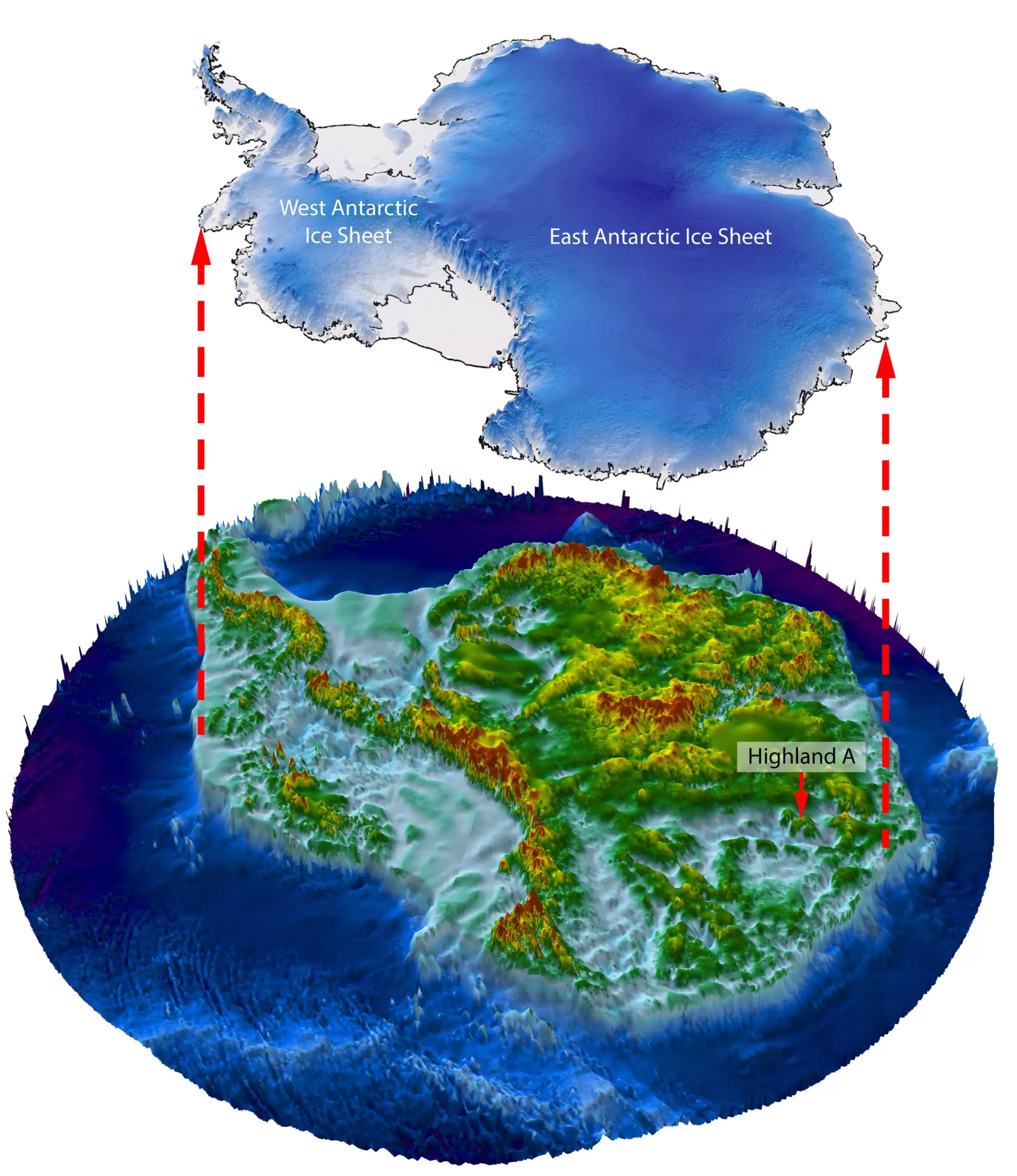In a groundbreaking discovery, scientists have revealed a vast, hidden landscape beneath the Antarctic ice that has remained untouched for potentially more than 34 million years. This frozen, ancient world, larger than Belgium, was carved by ancient rivers and has been preserved under the icy surface. While this discovery offers a glimpse into the Earth’s distant past, concerns arise regarding the potential threats posed by human-driven global warming, which could expose and forever alter this hidden landscape.
The lead author of the study, Stewart Jamieson, a glaciologist at Durham University, highlights the significance of this hidden landscape. Unlike the surface of Mars, this part of the Earth remains relatively unexplored. Until now, the main way to gather information from beneath the East Antarctic Ice Sheet was through radio-echo sounding. However, given the sheer size of Antarctica, this technique presented a significant challenge. To overcome this obstacle, the researchers used existing satellite images to trace out the valleys and ridges buried beneath more than two kilometers of ice.
Combined with radio-echo sounding data, these images unveiled a breathtaking river-carved landscape with plunging valleys and sharply peaked hills, reminiscent of some regions on our current Earth. The researchers compare the experience to looking out of an airplane window, observing a mountainous terrain below. The hidden landscape, stretching across 32,000 square kilometers, was once teeming with life, comprising trees, forests, and likely various animals. However, the encroaching ice froze this world in time, preserving its ancient beauty.
Pinpointing the exact age of this hidden world proves challenging. However, the researchers estimate that it has remained sealed for at least 14 million years. Stewart Jamieson even suggests that the last exposure was more than 34 million years ago, during Antarctica’s initial freezing over. This discovery raises the possibility of other untapped ancient landscapes concealed beneath the Antarctic ice.
While the discovery of this hidden landscape serves as a testament to our planet’s rich history, it also raises concerns about the future. The authors of the study highlight that global warming could pose a threat to this newly unveiled world. They highlight that our current trajectory is leading us towards atmospheric conditions similar to those that prevailed 14 to 34 million years ago when temperatures were three to seven degrees Celsius warmer than today.
Stewart Jamieson cautions that any potential exposure is still “a long way off” as the landscape lies hundreds of kilometers inland from the ice’s edge. He draws hope from the fact that during previous warming events, such as the Pliocene period three to 4.5 million years ago, the retreating ice did not expose this hidden world. However, the tipping point at which a “runaway reaction” of melting occurs remains uncertain.
The discovery of this hidden Antarctic landscape offers a glimpse into the Earth’s past and showcases the beauty and complexity of our planet’s geological history. The preservation of this ancient landscape for millions of years reminds us of the delicate balance of our planet’s ecosystems. As we face the challenges of climate change, it is crucial to recognize the potential threats posed by human-driven global warming. The exposed landscape serves as a stark reminder of the fragility of our environment and the urgent need for sustainable practices to protect our planet’s hidden wonders.


Leave a Reply